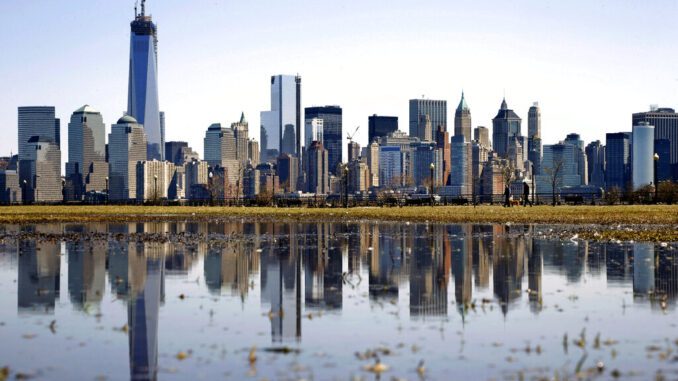
Ko Im always thought she would live in New York forever. She knew every corner of Manhattan and had worked hard to build a community of friends. Living in a small apartment, she found her attitude shifting early in the coronavirus pandemic. After her brother accepted a job in Seattle in the summer of 2020, she decided to move there too.
“It was fine until it wasn’t,” Im, 36, said of her time in New York. “The pandemic really changed my mindset about how I wanted to live or how I needed to live.”
Eight of the 10 largest cities in the U.S. lost population during the first year of the pandemic, with New York, Los Angeles and Chicago leading the way. Between July 2020 and July 2021, New York lost more than 305,000 people, while Chicago and Los Angeles contracted by 45,000 residents and 40,000 people, respectively.
San Francisco suffered the largest rate of decline, losing almost 55,000 residents, or 6.3% of its 2020 population, the highest percentage of any U.S. city.
The population estimates released by the U.S. Census Bureau capture a time early in the pandemic and don’t reflect changes since last summer. Whether the virus has permanently altered the urban landscape of America remains an open question.
Brookings Institution demographer William Frey said he believes the population declines in most of the largest U.S. cities from 2020 to 2021 have been “short-lived and pandemic-related.”
Among the 10 largest U.S. cities, only San Antonio and Phoenix gained new residents, but they added only about 13,000 people each, or less than 1% of their populations, according to the bureau’s 2021 vintage population estimates.
Among the largest U.S. cities, Austin and Fort Worth in Texas; Jacksonville, Florida; Charlotte, North Carolina; and Columbus, Ohio also registered modest population gains.
In March, the Census Bureau released estimates for metro areas and counties showing changes from mid-2020 to mid-2021. The estimates released Thursday offer a more granular perspective. For instance, the March data showed metro Dallas had the largest population gain of any metro area in the U.S., adding more than 97,000 residents, but Thursday’s estimates show the city of Dallas lost almost 15,000 residents. The growth occurred in Dallas suburbs like Frisco, McKinney and Plano.
Reasons for population changes vary from city to city, driven by housing costs, jobs, births and deaths. The pandemic and the lockdown that followed in spring 2020 made living in a crowded city less appealing for a time, and those who could leave — workers who could do their jobs remotely, for example — sometimes did.
Daniel Akerman, a New York real estate agent, said the Census Bureau data, which don’t go past July 2021, fail to capture how people have returned to the city in the past year. He said real estate transactions have skyrocketed and available rental apartments have dropped.
“People have definitely returned to the city. There are a lot more people on the streets,” Akerman said. “In July 2021, people were still guarded about COVID and a lot of that has gone away. People are a lot more free. They are out and about, going to restaurants.”
When it came to growth rates, as opposed to raw numbers, the fastest-growing cities with populations of at least 50,000 residents were in the suburbs of booming Sunbelt metro areas. They included Georgetown and Leander outside Austin; the town of Queen Creek and the cities of Buckeye, Casa Grande and Maricopa, outside Phoenix; the city of New Braunfels, outside San Antonio; and Fort Myers, Florida. They had growth rates of between 6.1% and 10.5%.
As metro Austin has grown by leaps and bounds, so has Georgetown, located more than 25 miles north of the Texas capital, said Keith Hutchinson, the city’s communications manager. The city grew by 10.5%, the most in the nation last year, and now has 75,000 residents.
“It’s not really a surprise,” Hutchinson said. “People are moving here for jobs.”
The estimates also showed population declines of 3% to 3.5% in New Jersey cities outside New York, such as Union City, Hoboken and Bayonne. Similar declines occurred outside San Francisco in Daly City, Redwood City and San Mateo, as well as Cupertino in Silicon Valley.



